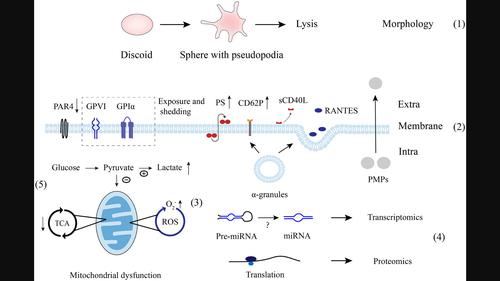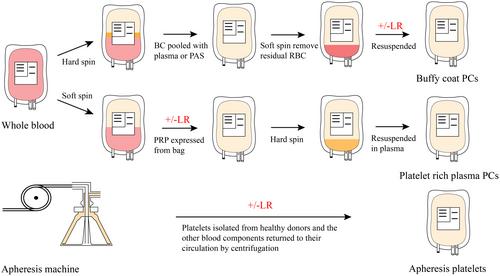The platelet storage lesion, what are we working for?
Abstract
Background
Platelet concentrate (PC) transfusions are crucial in prevention and treatment of bleeding in infection, surgery, leukemia, and thrombocytopenia patients. Although the technology for platelet preparation and storage has evolved over the decades, there are still challenges in the demand for platelets in blood banks because the platelet shelf life is limited to 5 days due to bacterial contamination and platelet storage lesions (PSLs) at 20–24°C under constant horizontal agitation. In addition, the relations between some adverse effects of platelet transfusions and PSLs have also been considered. Therefore, understanding the mechanisms of PSLs is conducive to obtaining high quality platelets and facilitating safe and effective platelet transfusions.
Objective
This review summarizes developments in mechanistic research of PSLs and their relationship with clinical practice, providing insights for future research.
Methods
Authors conducted a search on PubMed and Web of Science using the professional terms “PSL” and “platelet transfusion.” The obtained literature was then roughly categorized based on their research content. Similar studies were grouped into the same sections, and further searches were conducted based on the keywords of each section.
Results
Different studies have explored PSLs from various perspectives, including changes in platelet morphology, surface molecules, biological response modifiers (BMRs), metabolism, and proteins and RNA, in an attempt to monitor PSLs and identify intervention targets that could alleviate PSLs. Moreover, novel platelet storage conditions, including platelet additive solutions (PAS) and reconsidered cold storage methods, are explored. There are two approaches to obtaining high-quality platelets. One approach simulates the in vivo environment to maintain platelet activity, while the other keeps platelets at a low activity level in vitro under low temperatures.
Conclusion
Understanding PSLs helps us identify good intervention targets and assess the therapeutic effects of different PSLs stages for different patients.



 求助内容:
求助内容: 应助结果提醒方式:
应助结果提醒方式:


